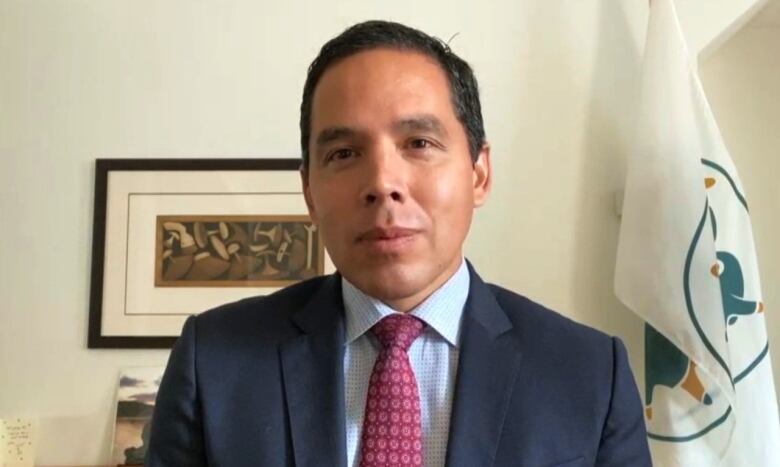Inuit Tapiriit Kanatami unveils plan to tackle food security 'crisis'
National Inuit organization released its long awaited food security strategy Monday

Inuit Tapiriit Kanatami(ITK)released its Inuit Nunangat Food Security Strategy on Monday, a projectyears in the making.
The strategyreleased by ITK,thenational organization representingInuit,is meant to outline needed changes or actions to improvefood securityin Inuit Nunangat the Inuit homeland in Canada. The region encompasses the land claimregions of Nunavut, Nunavik in Northern Quebec, Nunatsiavut in Northern Labrador and the Inuvialuit Settlement Region of the Northwest Territories.
Inuit experience the highest documented prevalence of food insecurity of any Indigenous people living in a developed country, the 56-page document says.
At any given time,ITK says many families struggle to access sufficient, safe and nutritious food to meet their dietary needs, as well as their food preferences for a healthy and active life. This struggledisproportionatelyaffects women and children, it says.
"The high prevalence of food insecurity among our people is one of the longest lasting public health crises faced by a Canadian population and is a distressing indicator of the numerous, interconnected social and economic inequities experienced by too many Inuit," the document reads.
It said those inequalities include poverty, inadequate and crowded housing, low educational attainment and employment.
ITK also points to climate change as a factor contributing to food insecurity, which can make the harvesting process "more expensive, unpredictable and dangerous."
Report outlines actions for improving food insecurity
Inuit communities have a unique food system compared to other regions in Canada. The systemincorporateson-the-land harvestingwith store bought food which is often flown into remote Inuit communities and is significantly more expensive to buy than in other parts of the country.
"The food insecurity and poverty many Inuit experience stems from the combined historical and present-day effects of colonialism, systemic racism and structural inequity in Canada," said ITK president Natan Obed in a letter within the food strategy.
"Living through food insecurity is to be in daily crisis and trying to manage through food insecurity can lead to long-term physical and psychological trauma."
The food strategy is written in two parts, with the first outlining the prevalence of food insecurity in Inuit Nunangat. The second sets out five priorities for investment and action along with objectives and actions for improving food security and supporting food sovereignty.
The priority areas include:
- Food systems and well-being Integrate Inuit-led food security and poverty reduction actions.
- Legislation and policy Create sustained Inuit engagement in comprehensive legislated solutions.
- Programs and services Build evidence-based and responsive programs and services.
- Knowledge and skills Support Inuit country food and sharing systems.
- Research and advocacy Mobilize Inuit food security research and evaluation.
The vision, according to the document, is to end hunger and advance Inuit food sovereignty throughout Inuit Nunangat. ITKhopesto do thisby helping to developa sustainable food system that reflects Inuit societal values, supports Inuit well-being, and ensures access to "affordable, nutritious, safe and culturally preferred foods."
It says that in order to work, the strategy needsa comprehensive federal approach from multiple federal government departments and agencies.

Infrastructure gap
The document says the food system has to be reshaped by Inuit in partnership with governments to fix systemic challenges that contribute to food insecurity.
These challenges include the growing infrastructure gap between Inuit Nunangat and most other regions of Canada.
For example,it points out that most airports in Inuit Nunangat communities only have gravel air strips,limiting the kinds of aircraft that can land and the types of payloads they can deliver.
In Greenland,for example, it says 14 of the country's 18 airstrips are paved,while in Alaska, there are 61 paved airstrips more than six times the number found in Canada's three territories combined.
There's also a deficit in marine infrastructure, according to the document, which again points to Greenland, where it says transportation of harvested foods and other goods between communitiesis supported by 95 ports. Meanwhile in Inuit Nunangat, two deepwater ports exist, but they were purpose-built to serve separate mining operations near Arctic Bay and Pond Inlet in Nunavut.
The documentalso says the region is "deprived" of small craft harbours that only exist in Pangnirtung, Nunavut, and in Nain and Makkovik in Nunatsiavut.
It does pointout that an $85 million deepwater port is under construction in Iqaluit, though it will take several years to complete.
The document says fixes to these problems arenot exactly"one size fits all."
For example, it says the lengthening and paving of airstrips is not necessarily viable in all communities due to geographical conditions.
Meanwhile, being able to land larger jets with more cargo capacity isn't necessarily best in many northern communitieswhere there is a lack oftemperature-controlled storageas even canned food can be damaged if left in the cold too long.It's also less economically viablewhere there is reliance on energy-intensive fossil fuels, and fresh foods have a limited shelf life.

How colonialism influenced food scarcity
While in the past, Inuit have undergone periods of food scarcity, theITKstrategy says prolonged hunger was rare.
The document breaks down some of the changes to the Inuit food system, starting in the early 1900s due to multiple colonial policies that "altered Inuit society."
Inuit communities wereforced to relocate further north,settleinto towns and attend residential schools, whichITK says curtailed Inuit mobility and in some cases, prevented Inuit from taking part in harvesting and passing on those skills.
These policies also limited Inuit self-determination in the development of the Inuit Nunangat food system, a reality that still persists today.
"Our ancestors thrived in our environment and were self-reliant, moving between seasonal camps to harvest food throughout the year," the document reads.
"Once Inuit moved into permanent year-round settlements, strict harvesting regulations and the culling of Inuit sled dogs in some regions had a dramatic impact on the ability of Inuit to remain self-reliant on harvested foods."












_(720p).jpg)


 OFFICIAL HD MUSIC VIDEO.jpg)
.jpg)



























































































